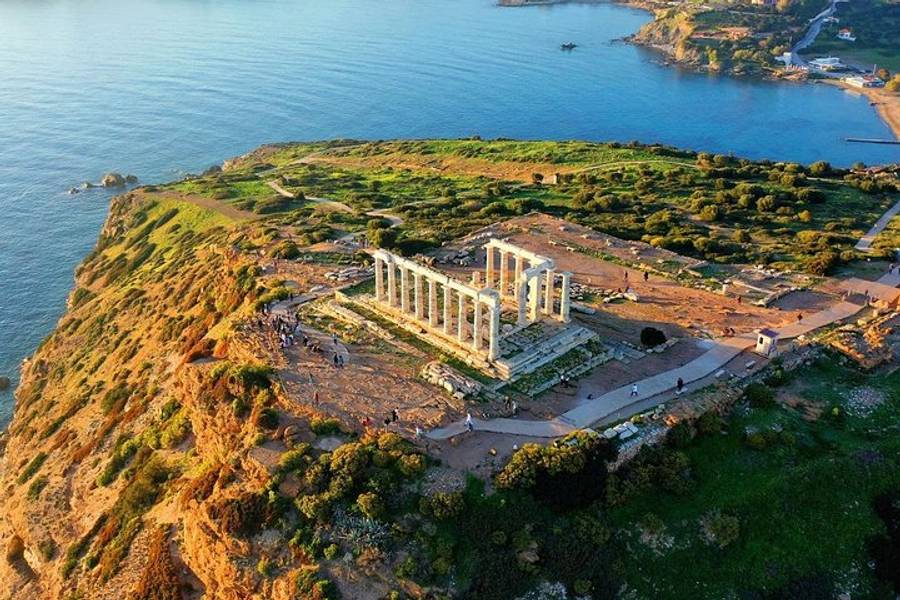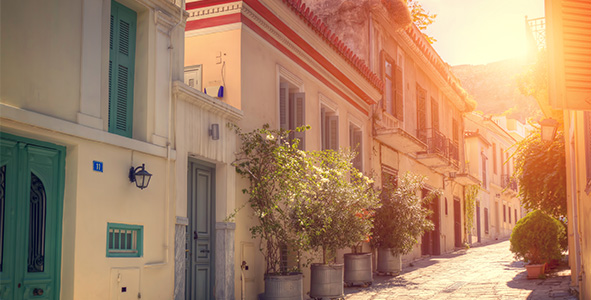The Temple of Poseidon at Sounion - Greece's Majestic Cliffside Wonder

Perched atop the dramatic cliffs of Cape Sounion, the Temple of Poseidon stands as a beacon of ancient Greek heritage. This iconic structure, constructed in the 5th century BCE, offers visitors a glimpse into the architectural mastery and religious devotion of classical Athens. With its recent lighting enhancement in September 2024, the temple now shines even more brilliantly against the Aegean Sea, captivating travelers and history enthusiasts alike. Discover the rich history, strategic significance, and architectural marvels of the Temple of Poseidon, an essential destination for anyone exploring the wonders of Greece
Historical Background
The Temple of Poseidon at Sounion was constructed between 444 and 440 BCE, during the same period as the ambitious building projects initiated by Pericles, including the Parthenon and the Temple of Hephaestus. This construction was part of a larger effort to establish prominent sanctuaries throughout Attica, asserting Athenian power and religious devotion. An inscription confirms that this temple was dedicated to Poseidon, the god of the sea, and was built upon the remains of an older poros temple, which was destroyed by the Persians in 490 BCE.
Strategic Location
The temple's location at Cape Sounion was strategically chosen not only for its religious significance but also for its military and economic importance. It provided a vantage point over the sea lanes to and from Piraeus, serving as a lookout for naval traffic and potential enemy movements. Its visibility from afar made it a crucial point for both sailors and the Athenian navy, marking it as an essential part of Athens’ maritime defense system.
Architectural Details
The Temple of Poseidon is a prime example of the Doric order, characterized by simplicity and strength. Constructed from Agrileza marble, the temple is peripteral, meaning it has a single row of columns surrounding the structure. It measures approximately 31.1 meters in length and 13.4 meters in width, with six columns at each end and thirteen along each side. A unique feature of this temple is its columns, which stand at 6.12 meters tall and have 16 flutes instead of the usual 20. This choice was likely influenced by the softer texture of the marble and the exposed location, which required the columns to be more resilient to the harsh weather conditions.
The temple's metopes were undecorated, but the architrave of the pronaos was adorned with a shallow Ionic frieze, which depicted mythological themes such as the amazonomachy, gigantomachy, and the deeds of Theseus. These reliefs were crafted from Parian marble, although much of the sculpture has been eroded over time.
Interior and Layout
The temple had three main parts: the pronaos, the cella, and the opisthodomos. The pronaos and the opisthodomos ended in two columns between antae, and the absence of an internal colonnade in the cella was a distinctive feature. The cella would have housed a colossal bronze statue of Poseidon, facing the entrance, and served as the focus of worship within the temple.
Recent Developments and Lighting
In September 2024, the Temple of Poseidon received a new lighting system, designed to enhance its architectural significance and visual presence. The new lighting, created by designer Eleftheria Deko, was meticulously installed to avoid interfering with the site's aesthetic and visitor experience. It provides a dramatic illumination of the temple at night, highlighting its historical and cultural importance.
The Temple of Poseidon at Sounion stands as a monument to ancient Greek religious, cultural, and military history. Its strategic location and architectural features make it a vital part of Athens' heritage, offering a connection to the past for all who visit. The new lighting further elevates its presence, ensuring that this ancient wonder continues to captivate and inspire for generations to come.

